#16th century european art
Explore tagged Tumblr posts
Text

Joris Hoefnagel (Flemish, 1542-1601) • Still Life with Flowers, a Snail and Insects • 1589
#still life#art#painting#fine art#art history#flemish artist#dutch golden age#floral still life#oil painting#artist#artwork#art of the still life blog#art blogs on tumblr#joris hoefnagel#art lovers on tumblr#16th century european art
63 notes
·
View notes
Text


Carravagio (Italian, 1571-1610) • Bacchus • c. 1596 • Uffizi Gallery, Florence
This cannot be Carravagio, you say? You are correct. The self-portrait is hidden in the wine flask which is part of the composition of Carravagio's famous Bacchus painting, shown above.

Via an infrared technique called multispectral reflectography, researchers were able to identify a tiny man which they're fairly sure is Carravagio. He's at the easel holding a paintbrush. One can faintly see the outline the head.
More here
“All works, no matter what or by whom painted, are nothing but bagatelles and childish trifles… unless they are made and painted from life, and there can be nothing… better than to follow nature”
– Carravagio
#art#art history#painting#oil painting#carravagio#baroque art#16th century european art#hidden self portrait#art & science#art research#bacchus#roman mythology#the canvas mirror art blog#art blogs on tumblr#art lovers on tumblr#artist quote
23 notes
·
View notes
Text
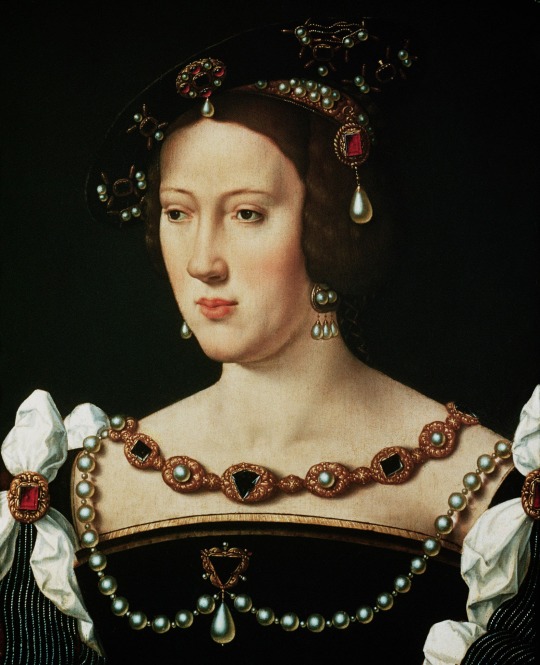
Joos van Cleve (Dutch, c. 1485-1540/1541) • Portrait of Eleanor of Austria • c. 1530 • Musée Condé, Oise, France


Details
The Resplendent Outfit: The outrageous, extravagant, sometimes humorous and often beautiful outfits worn by subjects of old portraits; captioned, as an attempt at satire; a little history occasionally thrown in the mix.
Outrageous
Extravagant ✅️
Humorous
Beautiful ✅️
#art#painting#portrait#royal portraits#eleanor of austria#joos van cleve#beautiful jewelry in paintings#16th century european art#royal portrait#dutch artist#dutch art#the resplendent outfit#art blog#historical portrait#art appreciation
30 notes
·
View notes
Text
For #GuineaPigAppreciationDay, the two earliest examples I've found of guinea pigs in the European visual record:
1. Painting attributed to Giovanni da Udine, n.d., artist active early 1500s to death in 1564
2. Drawing from the Felix Platter album, collected sometime between 1546-54
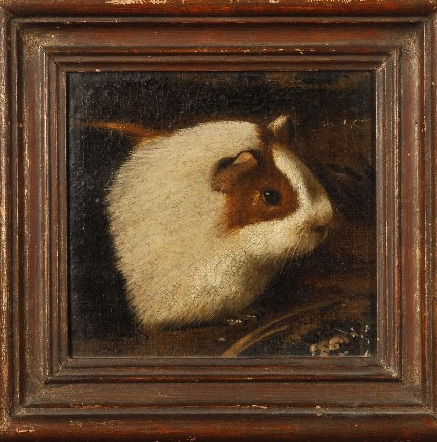
Attributed to Giovanni da Udine (Italian, 1487–1564) Head of a Guinea Pig oil on canvas laid on panel 6.5 x 7 in. (16.5 x 17.8 cm.) From Duke's Fine Art Auction catalog, 11th April 2013, Lot 215

Drawing collected by Felix Platter, to be used in Gessner's Historiae animalium. The drawings were made by several artists, mostly anonymous, and were collected between 1546 and 1558 (this one must date to no later than 1554 as it served as a reference for Gessner's woodcut published that year). Bijzondere collectie Universiteit van Amsterdam collection.
#Guinea Pig Appreciation Day#guinea pig#cavy#cavies#European art#early modern European art#painting#oil painting#watercolor#illustration#historical sciart#scientific illustration#zoological illustration#natural history art#Felix Platter#Conrad Gessner#Historia animalium#16th century art#animal holiday#animals in art#Bijzondere collectie Universiteit van Amsterdam#auction#private collection
1K notes
·
View notes
Text


Designs for a Dagger and Sheath, 1543
By Augustin Hirschvogel
#art#fine art#classical art#drawing#german art#german artist#beauty#print#graphic art#etching#16th century art#dagger#design#weapon design#european art#aesthetic#decoration#old art
655 notes
·
View notes
Text
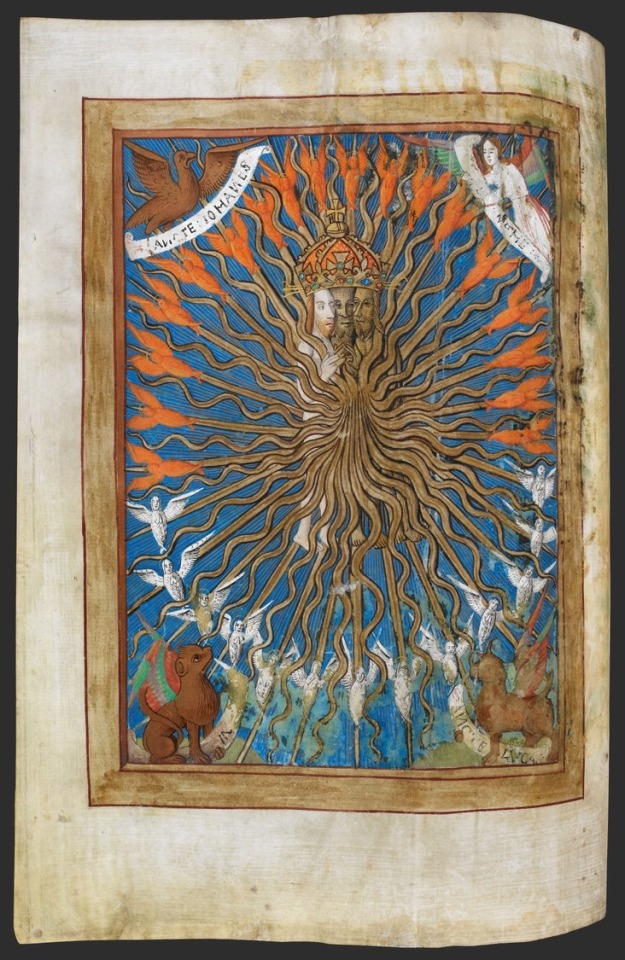
The Book of Hours, The Trinity
Ink, pigments and gold on vellum
illuminated manuscript, ca. 16th century
#art history#art#history#medieval#european art#animals#medieval art#christian art#middle ages#16th century#illuminated manuscript#manuscript#medieval manuscripts#religious art
549 notes
·
View notes
Text

Risen Christ
Artist: Francesco Napoletano (Italian, 1470-1501)
Date: c. 1500
Medium: Oil on wood
Collection: The John and Mable Ringling Museum of Art, Sarasota, Florida, United States
Description
As his name indicates, Francesco Napoletano was born in Naples, but he became one of the early followers of Leonardo da Vinci in Milan around 1490. Though this work shows elements derived from Leonardo’s style, especially the shading of Christ’s torso, the lone figure of the risen Christ was likely inspired by Venetian examples. This painting was probably made for a church in Venice, toward the end of Francesco’s life.
#painting#christian art#risen christ#jesus christ#landscape#christianity#italian culture#italian art#oil on wood#artwork#european art#biblical art#jesus#mountain#christ's resurrection#oil painting#fine art#mountaintop#sky#francesco napoletano#16th century painting#the ringling museum
34 notes
·
View notes
Text

Duke Albert V (1528-1579) of Bavaria with a Lion
Artist: Hans Mielich (German, (1516-1573)
Date:1556
Medium: Oil painting
Collection: Kunsthistorisches Museum Vienna, Austria
Albert V, Duke of Bavaria
Albert V (German: Albrecht V.) (29 February 1528 – 24 October 1579) was Duke of Bavaria from 1550 until his death. He was born in Munich to William IV and Maria Jacobäa of Baden.
Albert was educated at Ingolstadt by Catholic teachers. On 4 July 1546 he married Anna of Austria, a daughter of Ferdinand I, Holy Roman Emperor and Anna of Bohemia and Hungary (1503–1547), daughter of King Ladislaus II of Bohemia and Hungary and his wife Anne de Foix. The union was designed to end the political rivalry between Austria and Bavaria. In 1550, Albert succeeded his father as duke of Bavaria.
#portrait#painting#full length#standing#fine art#german culture#albert v#duke of bavaria#german history#interior#costume#lion#dog#hans mielich#german painter#oil painting#german art#16th century painting#european art#artwork
33 notes
·
View notes
Text

Cupid and Psyche by Jacopo Zucchi (1589).
#art#italian art#16th century#baroque#mannerist#oil painting#painting#mythology#greek mythology#european art#western art#flowers#cupid#eros and psyche
47 notes
·
View notes
Text

Portrait of Dante Alighieri
Artist: Florentine School
Date: c. 1540
Medium: Oil on canvas
Collection: Private collection, southern Germany
Dante Alighieri
Dante Alighieri (c. May 1265 – September 14, 1321), widely known mononymously as Dante, was an Italian poet, writer, and philosopher.His Divine Comedy, originally called Comedìa (modern Italian: Commedia) and later christened Divina by Giovanni Boccaccio, is widely considered one of the most important poems of the Middle Ages and the greatest literary work in the Italian language.
Dante is known for establishing the use of the vernacular in literature at a time when most poetry was written in Latin, which was accessible only to educated readers. His De vulgari eloquentia (On Eloquence in the Vernacular) was one of the first scholarly defenses of the vernacular. His use of the Florentine dialect for works such as The New Life (1295) and Divine Comedy helped establish the modern-day standardized Italian language. His work set a precedent that important Italian writers such as Petrarch and Boccaccio would later follow.
Dante was instrumental in establishing the literature of Italy, and is considered to be among the country's national poets and the Western world's greatest literary icons. His depictions of Hell, Purgatory, and Heaven provided inspiration for the larger body of Western art and literature. He influenced English writers such as Geoffrey Chaucer, John Milton, and Alfred Tennyson, among many others. In addition, the first use of the interlocking three-line rhyme scheme, or the terza rima, is attributed to him. He is described as the "father" of the Italian language, and in Italy he is often referred to as il Sommo Poeta ("the Supreme Poet"). Dante, Petrarch, and Boccaccio are also called the tre corone ("three crowns") of Italian literature.
#italian literature#dante alighieri#italian writer#italian poet#italian philospher#painting#oil on canvas#portrait#fine art#artwork#oil painting#half length#book#olive crown#italian culture#florentine art#16th century painting#european art
30 notes
·
View notes
Text

Odysseus and Circe
Artist: Bartholomäus Spranger (Flemish, 1546-1611)
Date: 1586-1587
Medium: Oil
Collection: Kunsthistorisches Museum, Vienna, Austria
Description
Odysseus travels to Circe's island, where he is warned by Hermes about Circe's magic and given an herb to protect himself. Odysseus ends up sleeping with Circe instead of being enchanted by her. Circe's advice.
#mythology#painting#bartholomeus spranger#flemish painter#mythological painting#oil painting#flemish art#odysseus#circe#statue#bared back#costume#cloth#helmet#female figure#male figure#artwork#16th century painting#european art
41 notes
·
View notes
Text

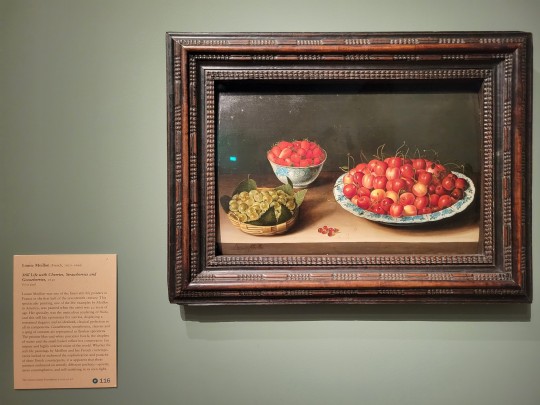
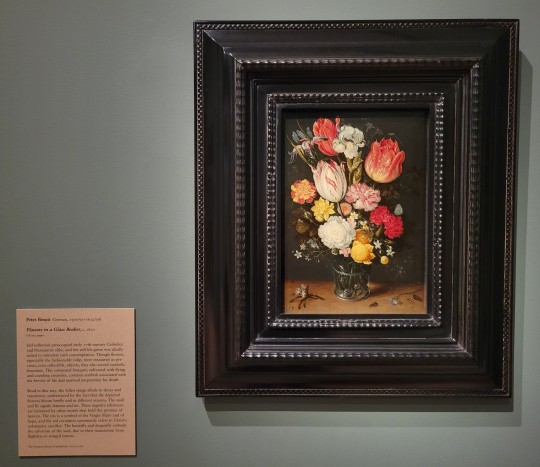
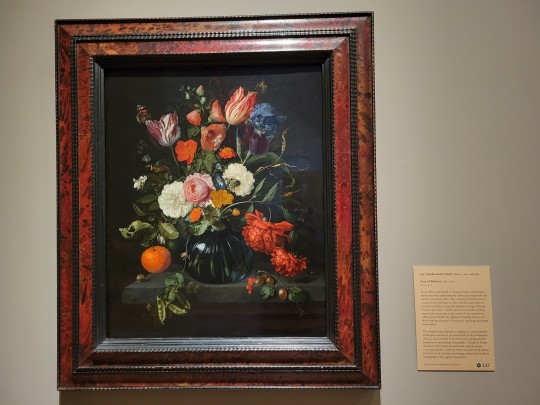

I went to the museum today.
#16th century#17th century#art#history#art history#still life#museum#european art#old master#my pictures
329 notes
·
View notes
Text

Allegory of Vanity
Artist: Paris Bordone (Italian, 1500-1571)
Date: 16th Century
Medium: Oil on canvas
Collection: Private collection
#painting#vanity#female figures#mirror#allegorical characters#curtains#costume#braided hair#turban#drapery#pearl necklace#nude figure#oil painting#artwork#fine art#oil on canvas#italian culture#italian art#paris bordone#allegorical art#allegory of vanity#italian painter#european art#16th century painting
24 notes
·
View notes
Text

A Woman Holding an Apple
Artist: Titian (Venetian, 1488/1490 - 1576)
Date: c. 1550
Medium: Oil on canvas
Collection: National Gallery of Art, Washington, DC, United States
Description
A striking young woman - with loose, untied hair and sleeves and a richly jeweled but informal gown - returns the viewer’s gaze. In her time, a viewer would have seen her as being in a state of semi undress. She cradles an apple in her hands, which in art often connotes female sexuality.
Despite the painting’s portrait like format, Titian probably did not depict a specific person here. He and other Venetian artists of the day painted many pictures representing beautiful young women, but it is often unclear whether such pictures are meant to be recognizable portraits of members of contemporary society or idealized images of anonymous beauties. Although the images may reflect Venetian courtesan culture of the period, there is no evidence that real courtesans had themselves portrayed in this way. Rather, such pictures may be interpreted as fanciful portrayals of female beauty, designed to appeal to the eyes of the painting’s owner.
#painting#genre art#woman#sea green gown#elbow length sleeves#eggshell white garment#pearl earrings#pearls#jewels#gold embroidery#apple#beauty#standing#brown background#oil on canvas#fine art#oil painting#titian#venetian culture#venetian painter#italy#16th century painting#european art#artwork#16th entury art
25 notes
·
View notes
Text
#FrogFriday 🐸:



Pendant: enameled gold and ruby toad 1585/1600 (end of 16th c.) H: 7.5 cm (with chain); W: 2.5 cm Musée du Louvre OA 2321
#animals in art#european art#pendant#jewelry#jewellry#gold#ruby#enamel#16th century art#Musée du Louvre#frog#toad#amphibian#Frog Friday
42 notes
·
View notes
Text

The bridal jewelry. Venetian women in the 16th century, 1872
By Cesare Dell'acqua
#art#painting#fine art#classical art#italian art#italian artist#italian painter#oil painting#19th century art#beauty#italian#venetian#southern europe#italy#16th century#1700s#european art#dress#fashion#historical fashion#european culture#jewelry#venice
84 notes
·
View notes